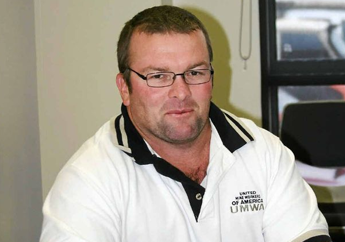Published: 14 Jul 2016

In an announcement that is sending shockwaves through the mining industry, a report from medical experts investigating rates of Black Lung disease amongst Australian miners has revealed the problem is much worse than anticipated.
The first comprehensive review into a sample of 248 miner x-rays and health records has revealed that 18 cases have returned results showing Black Lung disease - in addition to the existing 11 cases that have been confirmed by the Queensland government.
Disturbingly, the original assessments of these reports only returned 2 positive cases, while 13 were reported as negative, and another three were missing - revealing the dangerous failings of Australian radiologists in detecting Black Lung disease.
The secondary reviews by United States based and internationally recognised Black Lung expert Dr Bob Cohen formed part of a report to the Queensland Government highlighting the seriousness of the crisis in the state’s mines.
CFMEU Mining and Energy Division Queensland District President, Stephen Smyth, said the numbers unfortunately vindicated the union’s claim that numbers were greater than any of the official figures suggested, making it clear the Government had to end the self-regulation of dust levels by the mining industry.
“What the experts are telling us is that there may be a 7.3% incidence rate of Black Lung disease amongst Queensland coalmine workers in the sample they have looked at,” Mr Smyth said. “This rate of Black Lung puts Australia second only to China in the world and well ahead of the US and Britain.
“This is the crisis that the union alone has been warning about and it is only the tip of the iceberg.
“18 cases confirmed out of just 248 assessments is more than we were expecting, and shows why we need action now, not for this to again be put on the government backburner.”
Reports have also emerged that some victims were under the age of 40 – putting to bed the idea that this was a disease which only presented after decades working in coal mines.
“Every one of the workers with Black Lung disease is a victim of a system that has let them down. Mining companies have purposefully misrepresented dust levels, previous governments have allowed companies to monitor their own dust levels, and local radiologists have completely missed a public health crisis because they weren’t qualified to do the job they were supposed to be doing,” Mr Smyth said.
“When you have a trusted group of professionals like radiologists from the Health Services Unit claiming to be qualified and performing checks on x-rays but missing Black Lung disease for six or seven years in some miners then the system has failed.
“While I welcome the government’s commitment to improved screening, and to have every record double checked by international experts, because Australian radiologists have time and time again shown that they aren’t able to identify Black Lung disease, someone needs to take responsibility for letting dozens of coalmine workers continue to work in dangerous conditions
“These failings show just how important it is that Australian radiologists are trained to the ILO B-Reader level to ensure that mistakes that have lead to more than a dozen cases being missed in just one sample of x-rays and records can’t happen again, and workers can have faith in their healthcare providers.”
Mr Smyth said he was pleased the Government had today responded by doubling down on its commitment to grapple with the issue and wants to see the broken systems that have led to this crisis fixed – particularly dust levels and monitoring.
“There is nothing stopping us from taking action today to reduce dust now. We should act quickly and decisively,” Mr Smyth said.
“People will continue to get Black Lung disease until we reduce dust levels in Queensland coal mines and stop this crazy situation where mining companies who caused this problem get to control the monitoring and compliance regime.
Queensland mines have higher legal dust limits (3mg per cubic metre) than compared to international best practice, to New South Wales (2.5mg per cubic metre), and even the United States (1.5mg per cubic metre).
But even those numbers are not adhered to in Queensland with clear evidence that self-regulation of dust levels has failed coalmine workers, with mining companies choosing to test at times of lower production or when mines are in maintenance.
“Mining companies like BHP keep making public statements that they are keeping ‘average’ dust levels below the legal limit now, but that implies that dust levels are ‘at times’ above the legal limit,” Mr Smyth said. “It is not good enough that ‘average’ dust levels are below the legal limit – dust levels must be legal at all times.”
In the twelve months since the return of Black Lung disease was made public, there have been no change to the legal dust limit, nor to the self-regulation of dust levels that have led to this problem.
“We want to see the self-regulation of dust levels end as soon as possible because mining companies have breached the community’s trust.
“Self-regulation has proved an absolute disaster and is now costing dozens of miners their lives and many more their health. It needs to be ended now and not put off to some other time down the track”.